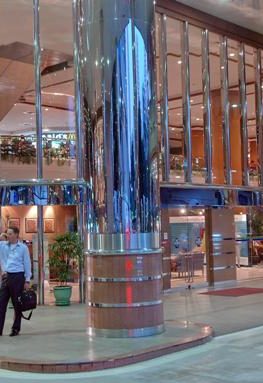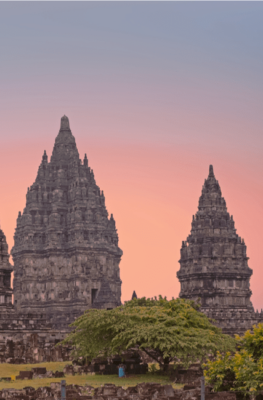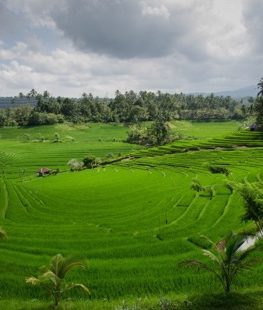Published on September 11, 2015

Majestic Hotel Melaka lobby. Image © Mike Aquino, used with permission.
When European colonists were in charge of Southeast Asia’s capitals, they built clones of their own cities back home, their grand buildings in the tropics almost indistinguishable from those standing in Europe. Old world buildings still stand in Southeast Asia today: some of the finest have been converted into hotels.
These government buildings-turned-hotels are excellent examples of the art of “adaptive reuse”, the imaginative re-adaptation of a structure made for one purpose into another. When the Europeans ceded authority to their former subjects in Southeast Asia, they also ceded some of their grandest buildings, which immediately outgrew their purpose as soon as the flags changed. It’s to these countries’ collective credit that they resisted the temptation to tear them down, and turning them to other purposes instead!

Hotel Fort Canning exterior. Image © Mike Aquino, used with permission.
Singapore’s Buildings Preserve its Past
Singapore‘s past as one of Britain’s former Straits Settlements provides it plenty of excellent examples of adaptive reuse. Take the Hotel Fort Canning, built in 1926 to serve as a former military command post for the British Army at Fort Canning; and the Fullerton Hotel, opened in 1928 to house Singapore’s Post Office.
Almost a hundred years on, both buildings have transformed themselves into two of Singapore’s classiest hotels. Both hotels leverage colonial heritage and architecture into something more: the Hotel Fort Canning embraces an added role as a curator of Singapore history, as the Fort Canning hill behind it has yielded ancient relics dating back to the 1300s.
Some of these relics are preserved for display in a little alcove set under glass in the hotel’s lobby, forming part of its floor.

Roofdeck of the Syok Hostel, Penang, Malaysia. Image © Mike Aquino, used with permission.
Malaysia’s Repurposed Mansions and Shoe Stores
More imaginative examples of adaptive reuse can be found in Malaysia, specifically the former colonial trading ports of Penang and Melaka.
In Melaka, the Majestic Hotel stands beside the Melaka River, a renovated Peranakan mansion first constructed in the 1920s and allowed to fall into disrepair after the decline of the owner’s family fortunes. Melaka’s UNESCO World Heritage recognition breathed new life into the city, and by extension the mansion – YTL Hotels purchased the house (saving it from demolition) and restored its Peranakan fittings, allowing guests to feel as if they’re staying in a living, breathing Peranakan house.
In Penang, shophouses along its historic George Town district have found new leases on life by transforming into boutique hostels. A former shoe store on George Town’s Lebuh Chulia has done just that: the Syok Boutique Hostel still displays its old shoe-store signage proudly at the top-floor common room, but has transformed everything else into a modern, comfortable budget accommodation, with quirky artwork gracing the walls, its storerooms converted into air-conditioned dormitories, and surfaces brightened with fresh coats of primary-colored paint.

The Strand Bar, Yangon, Myanmar. Image © Mike Aquino, used with permission.
Southeast Asia’s Grand Old Dames
Not all of Southeast Asia’s older hotels have been adapted from other purposes. Some of the region’s classic “grand dames” – Yangon, Myanmar‘s Strand Hotel (opened 1901); Siem Reap, Cambodia‘s Raffles Grand Hotel d’Angkor (opened 1929); and Bangkok, Thailand‘s Mandarin Oriental Hotel (opened 1876) were all conceived as hotels from the very beginning.
These hotels, more than any other carryover from colonial times, capture the spirit of those bygone eras: baroque wood surfaces, marble columns and spacious, high-ceilinged rooms set the mood for the throwback establishments on the premises: the Strand, for example, offers a bar that looks like it was torn out of a Somerset Maugham short story, complete with billiards table and endless peanuts to go with your beer.
The past lives on: a booking at any of these hotels is all it takes to relive those years.






